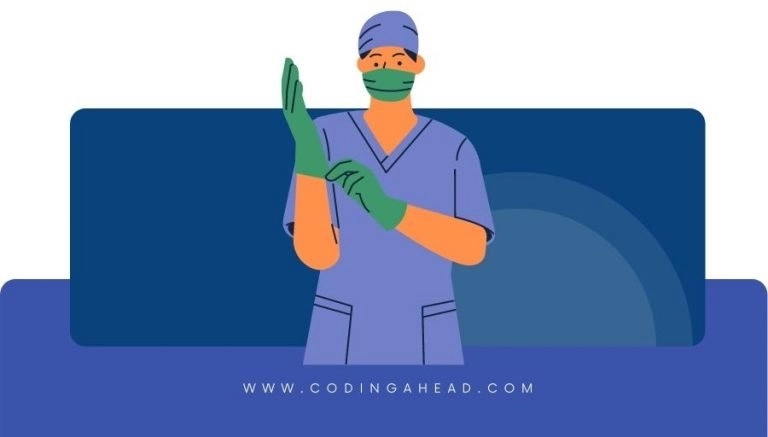How To Use CPT Code 92511
CPT 92511 describes the examination of the nasal passages and throat using an endoscope, a tubular instrument with a light source and camera. This article will cover the description, procedure, qualifying circumstances, appropriate usage, documentation requirements, billing guidelines, historical information, similar codes and billing examples.
1. What is CPT Code 92511?
CPT 92511 can be used to describe the examination of the nasal passages and throat using an endoscope. This code is used when a healthcare provider uses a tubular instrument with a light source and camera to visually inspect the inside of the nose, mouth, and throat. The provider looks for any abnormalities or blockages in the airway, such as nasal septum deviation, polyps, adenoid or tonsil enlargement, or lesions in the nasopharynx.
2. Official Description
The official description of CPT code 92511 is: ‘Nasopharyngoscopy with endoscope (separate procedure).’ This code should not be reported in conjunction with codes 31575, 42975, 43197, or 43198. For surgical nasopharyngoscopy with eustachian tube dilation, refer to codes 69705 and 69706.
3. Procedure
- The patient is appropriately prepped and anesthetized.
- The healthcare provider passes an endoscope through the nose.
- The provider examines the inside of the nose, mouth, and throat, inspecting for any fixed blockages or lesions.
- The provider may evaluate the size of the adenoids or tonsils.
- The provider may also assess the nasopharynx for any abnormalities.
4. Qualifying circumstances
CPT 92511 is used when a healthcare provider examines the nasal passages and throat using an endoscope. This procedure is typically performed to evaluate the presence of any fixed blockages, such as nasal septum deviation, polyps, adenoid or tonsil enlargement, or lesions in the nasopharynx. It is important to note that this code should not be reported in conjunction with codes 31575, 42975, 43197, or 43198.
5. When to use CPT code 92511
CPT code 92511 should be used when a healthcare provider performs a separate procedure to examine the nasal passages and throat using an endoscope. This code is appropriate when the provider is specifically evaluating the nasopharynx, adenoids, tonsils, or any other structures within the nose and throat. It should not be used for procedures that involve dilation of the eustachian tube or other surgical interventions.
6. Documentation requirements
To support a claim for CPT 92511, the healthcare provider must document the following information:
- Reason for the examination and the specific structures evaluated
- Details of the endoscope used, including type and size
- Date and time of the procedure
- Findings from the examination, including any abnormalities or lesions
- Any additional procedures or interventions performed during the same session
- Signature of the healthcare provider performing the procedure
7. Billing guidelines
When billing for CPT 92511, ensure that the procedure is performed as a separate service and not in conjunction with codes 31575, 42975, 43197, or 43198. It is important to accurately document the specific structures evaluated during the examination. If an evaluation and management (E/M) service is also provided, ensure that it is for a different reason than the scope and that the decision to perform the procedure is documented. It is crucial to use the code that best describes the documentation and purpose of the procedure.
8. Historical information
CPT 92511 was added to the Current Procedural Terminology system on January 1, 1990. There have been no updates or changes to the code since its addition.
9. Examples
- A healthcare provider performs a separate procedure to examine the nasal passages and throat using an endoscope, and identifies a deviated nasal septum in a patient.
- During a separate procedure, a healthcare provider uses an endoscope to visually inspect the inside of the nose, mouth, and throat, and discovers the presence of nasal polyps in a patient.
- A patient undergoes a separate procedure in which a healthcare provider examines the nasal passages and throat using an endoscope, and identifies enlarged adenoids.
- During a separate procedure, a healthcare provider uses an endoscope to evaluate the nasopharynx and discovers a lesion in a patient.
- A healthcare provider performs a separate procedure to examine the nasal passages and throat using an endoscope, and identifies tonsil enlargement in a patient.
- During a separate procedure, a healthcare provider uses an endoscope to visually inspect the inside of the nose, mouth, and throat, and discovers the presence of a lesion in the nasopharynx of a patient.
- A patient undergoes a separate procedure in which a healthcare provider examines the nasal passages and throat using an endoscope, and identifies a deviated nasal septum.
- During a separate procedure, a healthcare provider uses an endoscope to evaluate the nasopharynx and discovers the presence of nasal polyps in a patient.
- A healthcare provider performs a separate procedure to examine the nasal passages and throat using an endoscope, and identifies enlarged tonsils in a patient.



